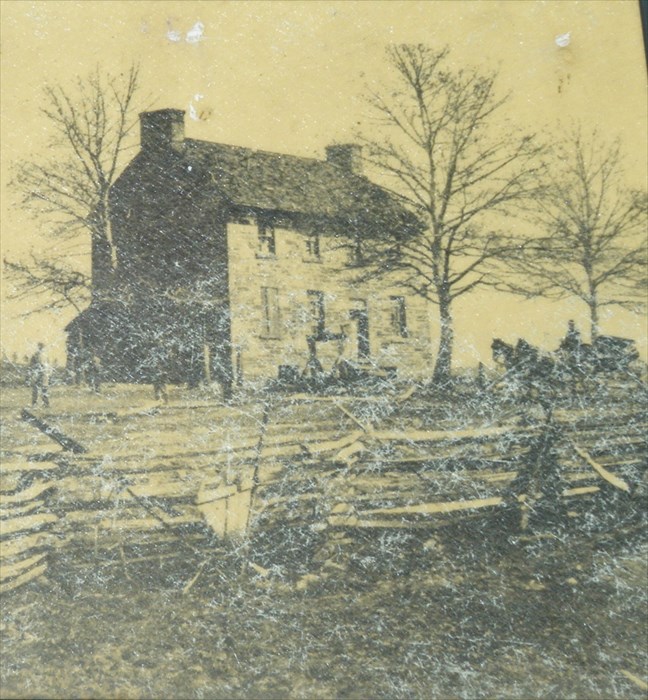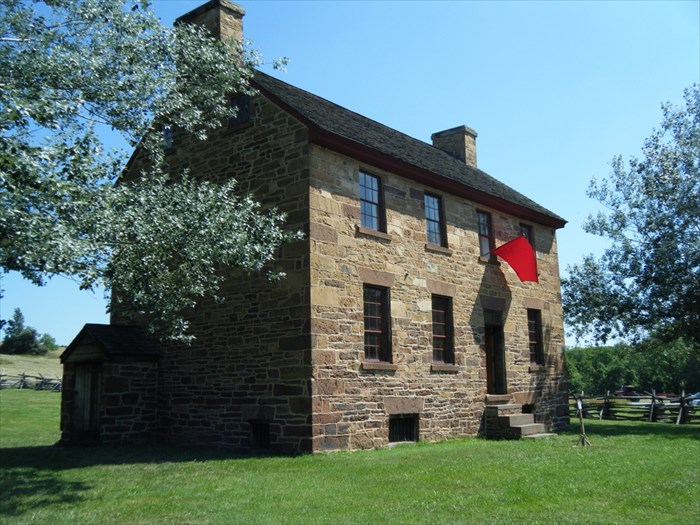
The Stone House ~ 1862, Manassas, VA Battlefield
Posted by:  garmin_geek
garmin_geek
N 38° 49.124 W 077° 31.553
18S E 280707 N 4299692
Surviving both major battle of the Civil War, the Stone House as been restored by the National Park Service to its 1861 appearance. Photo was taken looking NNE from inside the fenceline of the property, adjacent to Lee Hwy.
Waymark Code: WMC22J
Location: Virginia, United States
Date Posted: 07/16/2011
Views: 7

1862
|

2011
|
The old image from 1862 is taken off the NPS sign at the walkway entrance to the house.
A former tavern, the Federals used it as a field hospital.
The Stone House remains one of only three intact pre-Civil War buildings within Manassas National Battlefield Park. The imposing red sandstone structure dominates the historic crossroads of the Sudley-Manassas Road (modern Route 234) and the Warrenton Turnpike (Route 29). The Stone House was built in the heyday of America’s “Turnpike Era” in the second quarter of the nineteenth century. The Warrenton Turnpike, completed in 1828, represented one of the best hard-surfaced roads of early Virginia, connecting farms from the lower Shenandoah Valley to markets in the east. A turnpike toll gate stood across the road near the Stone House, and weary droves and teamsters could stop at the house for refreshment. The Stone House probably served the traffic on the turnpike as a wagon stop, where hard men drank hard liquor, rather than as the type of tavern commonly described by the more genteel travelers of the time.
Henry P. and Jane Matthews owned the Stone House from 1850 until 1865. When the railroad extended into the area in the 1850’s, wagon traffic on the turnpike steadily decreased, and Mr. Matthews increasingly turned to farming corn, oats, and hops to make his living. Then the war came, and the railroads twice drew the opposing armies to Manassas. The Matthews apparently attempted to remain in their home as the fighting swirled around them. Like most available structures in the area, the house was taken over as a refuge for the battle casualties. After the Second Battle of Manassas, Confederate officers used the Stone House to parole Union prisoners.
In 1865 the Matthews sold their property and moved away. The Stone House continued in private and public use, at times as a tavern, post office and residence-and always as a battlefield landmark for travelers. The Federal Government bought the property in 1949, and in 1960 the Park Service began a major restoration project to return the building to its Civil War appearance. Much of the original structure remains, including the exterior walls, the chimneys, and a considerable amount of the flooring inside the house. No original furnishings exist that can be associated with the house. However, main floor exhibits and representative displays speak to the rich historical heritage of the Stone House.
Source